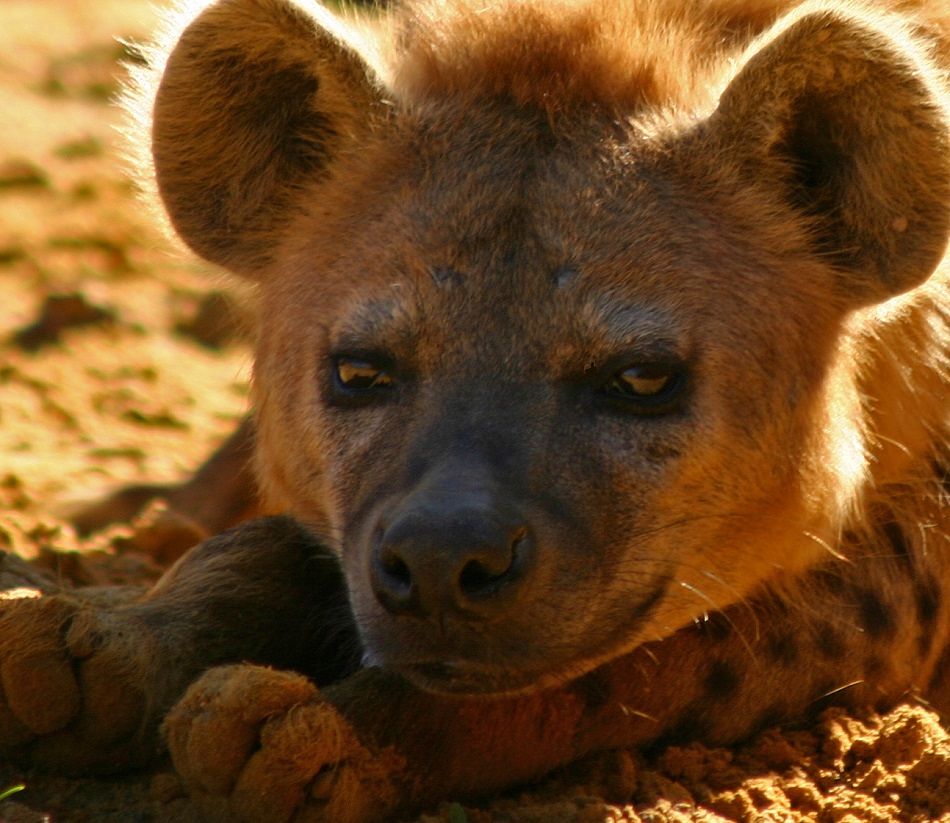Baby Hyena
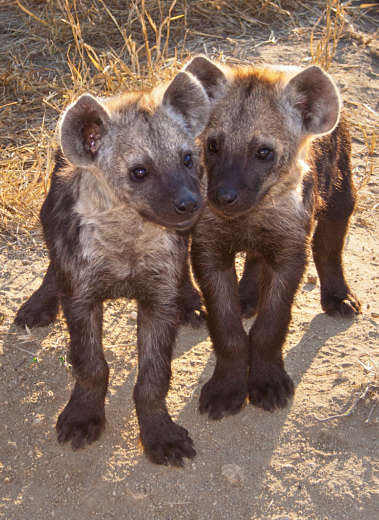 Portrait of baby hyenas
Portrait of baby hyenasA baby hyena is called a cub, and is born in an underground den dug by the mother.
A baby hyena enters the world ready to rumble. Born in litters of only 2 or 3 cubs, the baby hyenas are so aggressive that they may force a weaker sibling to starve by pushing it away from the mother.
They need this toughness to survive in the pack, and thrive on the African savanna.
The spotted hyena is the most common hyena species, and also the largest.
Adults are about 30 inches tall at the shoulder and weigh 100 to 180 pounds.
Female hyenas are larger and more aggressive than males.
Hyena pregnancy lasts about 110 days, and newborns are well-developed.
Spotted hyena babies are born with black, scruffy fur, tiny teeth already broken through their gums, and their eyes open.
They weigh only about one pound when newborn, and for the first few days of life, the mother hyena may keep them from the rest of the clan.
At about 3 weeks old the black coat starts to lighten, and spots appear. The babies become much more active and mingle with the clan.
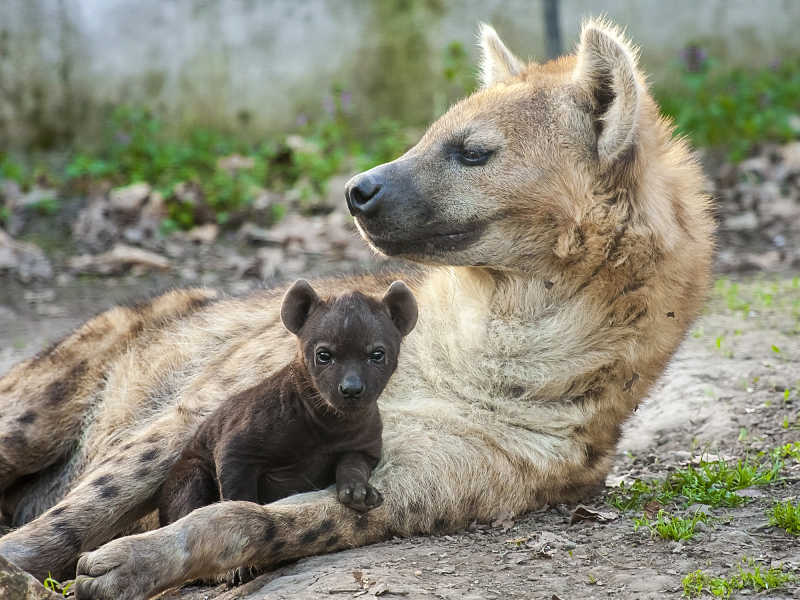
The mother hyena will leave them with male "baby sitters" as she goes out to hunt with the female hyenas.
The society of the spotted hyena is matriarchal, meaning that females are larger, stronger and more aggressive than males.
Female spotted hyenas have unusually high testosterone levels that don't just change behavior but also transform the female sex organs.
The female hyena looks almost identical to the male, and even experts can't sex them without a physical examination.
This has caused many to believe that hyenas are clans of devilish hermaphrodites whose cackles mock the norm.
But actual intercourse is no laughing matter, it
is a delicate and stressful process where a submissive male must
somehow arch his way under the female to complete the act.
There are usually two cubs delivered, but fighting between the cubs often occurs, particularly if they are the same sex, and the weaker sibling will often perish in the first weeks.
Young males will leave the clan at about 2 years, females will remain for life.
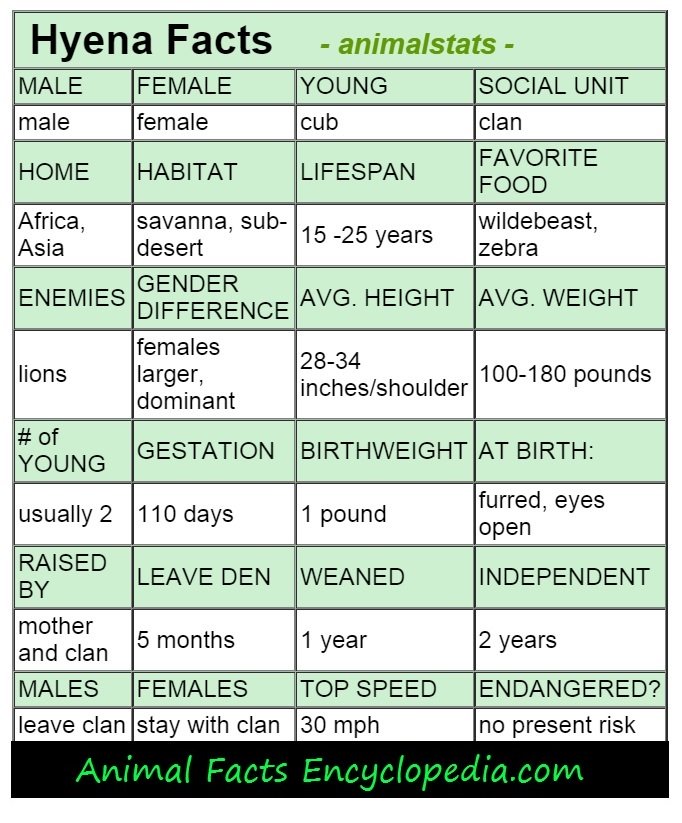
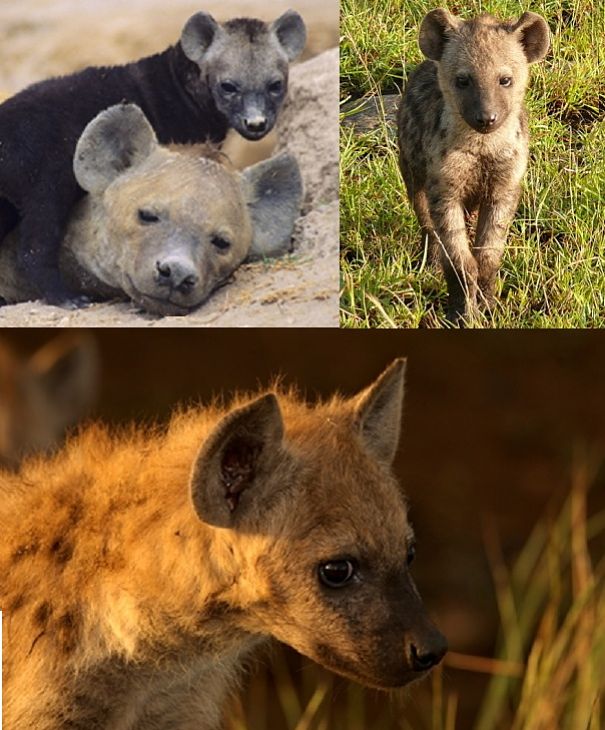

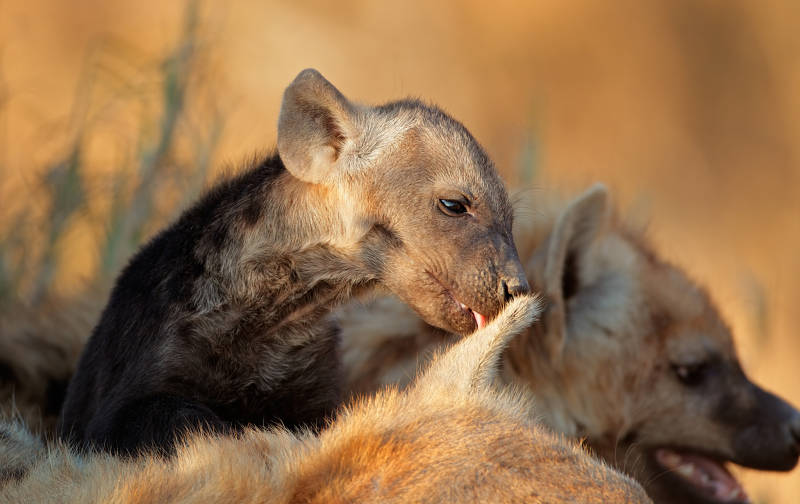
a few more Baby Hyena facts
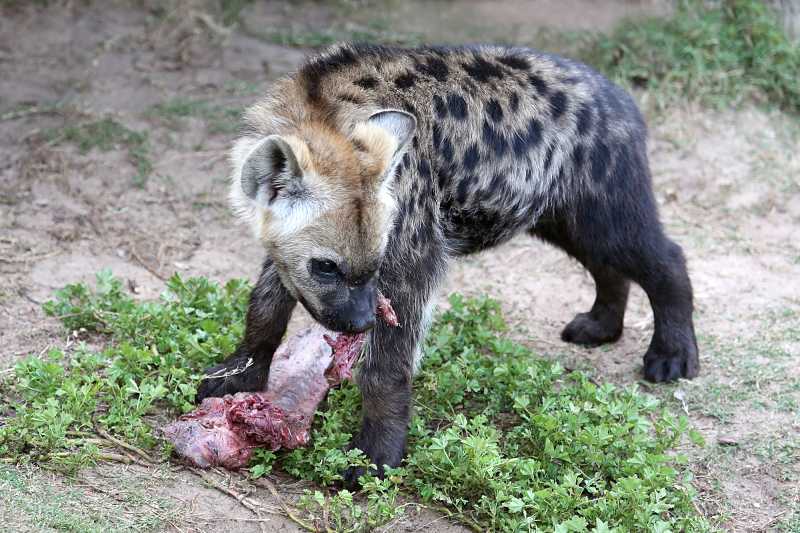
- A baby hyena is called a cub
- Baby spotted hyenas are born solid black
- They get their spots when they are a few weeks old
- There are only 2 to 3 cubs in a litter of hyenas
- Sometimes only one survives because they are so competitive
- They may actually push their brother or sister out of the nest or away from the mother
- Hyenas often have difficulty giving birth due to their unusual genitalia
- It is very difficult to tell the difference between male and female hyenas
- When fully grown, the females tend to be larger and more aggressive than the males
- The milk of the mother hyena is extremely rich, and even newborn babies can go for a day or two without nursing if necessary
see more animal extreme closeups
Recent Articles
-
African Animals - Animal Facts Encyclopedia
Oct 11, 16 10:27 PM
African Animals facts photos and videos..Africa is a wonderland for animal lovers, and a schoolroom for anyone who wants to learn about nature, beauty and the rhythm of life -
Baboon Facts - Animal Facts Encyclopedia
Oct 11, 16 10:26 PM
Baboon facts, photos, videos and information - Baboons are very distinctive looking monkeys with long, dog-like snouts and close set eyes. -
Great Apes Facts - Animal Facts Encyclopedia
Oct 11, 16 10:25 PM
Great apes facts, photos and videos..Human beings did not evolve from chimpanzees, modern chimps and gorillas do not appear in the fossil records until much more recently than homo sapiens..




















